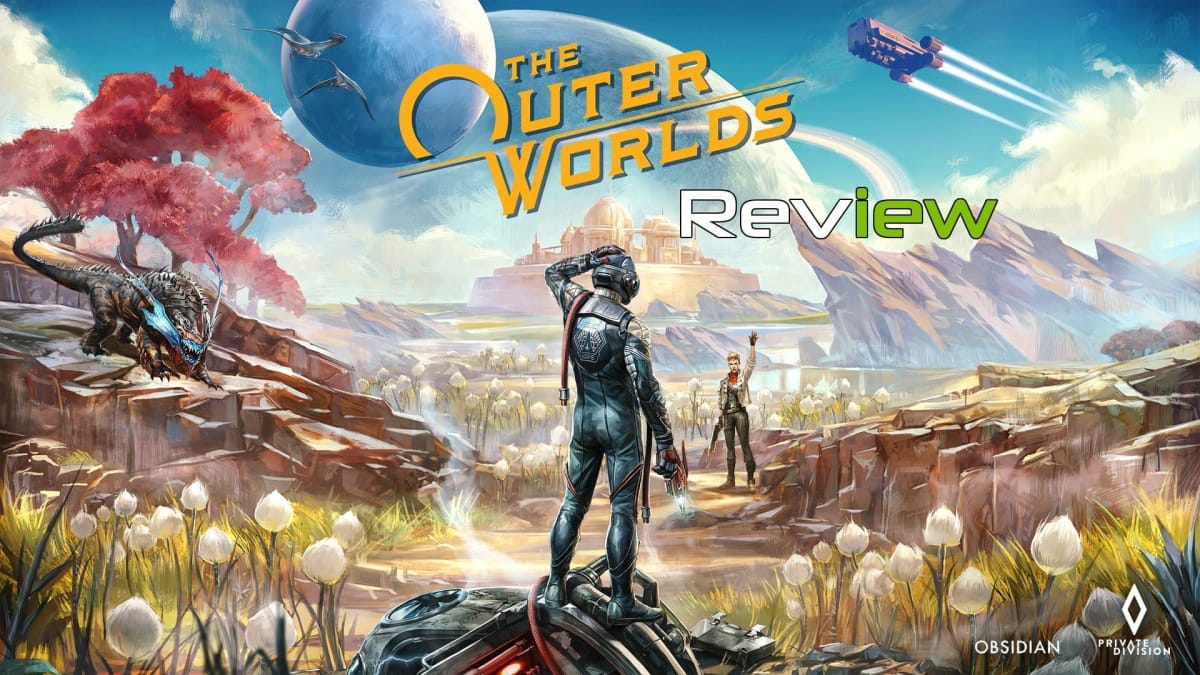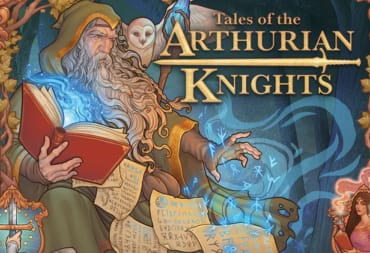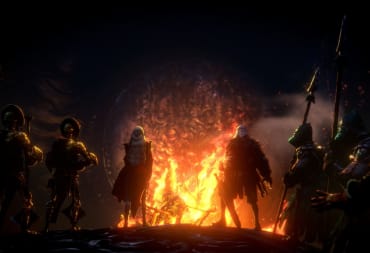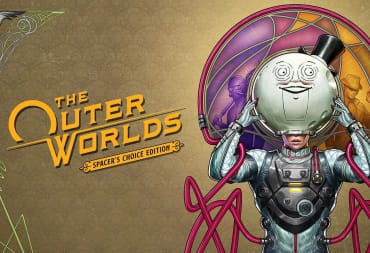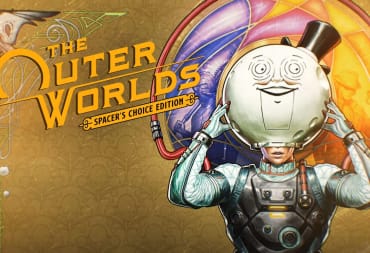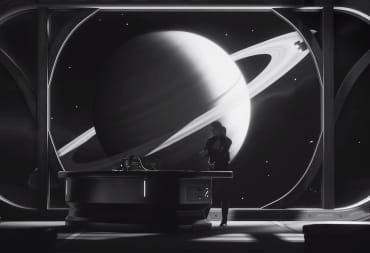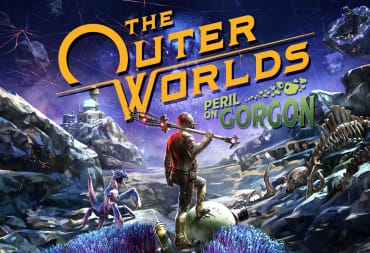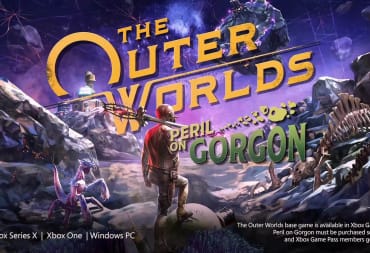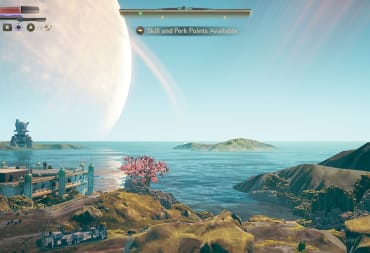More than 300 years into the future, humanity's reach extends far beyond our humble solar system. One of our furthest colonies lies in the Halcyon system, a capitalist paradise controlled by corporations. Everything and everyone remains under the watchful eye of The Board, a conglomerate made of the companies in control. Things aren't right for the average person in the colony, and unfortunately, everyone has their own solution to the problem. You enter The Outer Worlds in these dire times, and you might be the only one who can save Halcyon.
Obsidian paints an absurdist, frightening depiction of humanity in its latest RPG. The brilliant writing and world-building create a believable, colorful universe full of unsettling whimsy. In many ways, the story makes you think about the state of the real world, but it also makes you laugh at the silliness of life. With all the chaos happening in the colony, you play as an unexpected variable that could shake up everything. Despite the occasional hitch with companion AI, the journey at large is worth the price of admission, especially for fans of Fallout: New Vegas. Every moment in The Outer Worlds showcases Obsidian at its finest, from the numbers-heavy stats management to the show-stopping dialogue. Once you pick it up, putting it down becomes the hardest skill check to pass.
The Outer Worlds Lives and Breathes
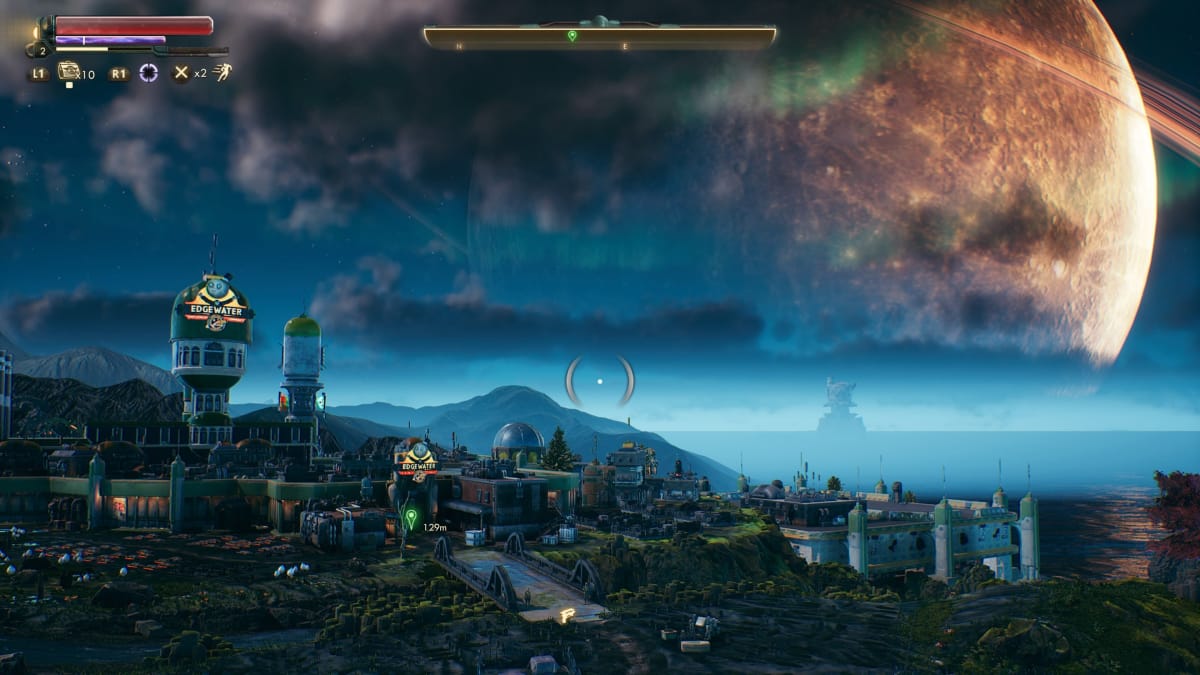
Early in your journey through The Outer Worlds, you’ll come across Spacer's Choice, one of the many corporations controlling Halcyon. They supply the space colony with low-quality goods that break easily, but faithful fans applaud those goods for always being "new." After all, "It's not the best choice. It's Spacer's Choice!" Colonists will parrot the motto around, sometimes half-heartedly. From the beginning, Obsidian properly sets the tone for your next 30-40 hours: a crushing yet comedic exploration of capitalism.
The Outer Worlds is also extremely absurd. No one believes your insane origin story, yet every companion joins your interplanetary journey at the drop of a hat. Selfishness and greed drive success, but everyone still belongs to their company’s “family.” Corporations like Spacer's Choice and Auntie Cleo's care about their assets (sometimes known as employees), laying them to rest in corporate-sponsored graveyards. Assuming they posthumously pay the fees, of course.
Despite how insane this universe is, Obsidian successfully builds a believable world full of personality. Your choices have consequences. Different people react differently to your actions. Some might like your wisecracking jokes, while others threaten to kill you if you crack another one. Your reputation with all the factions vary depending on what you do. You can curry favor or antagonize whichever groups you want, receiving whatever consequences come your way.
You may be a literal stranger in a strange land, but your actions ripple out, ultimately determining the fate of many. You make heavy choices. For the anarchists, even outright killing NPCs can be a choice, which Obsidian (mostly) accommodates. However, none of them are the “right” choice. Someone always suffers at your hands, forcing you to consider the morality of your character and, by extension, yourself.
The Outer Worlds Lets You Do You
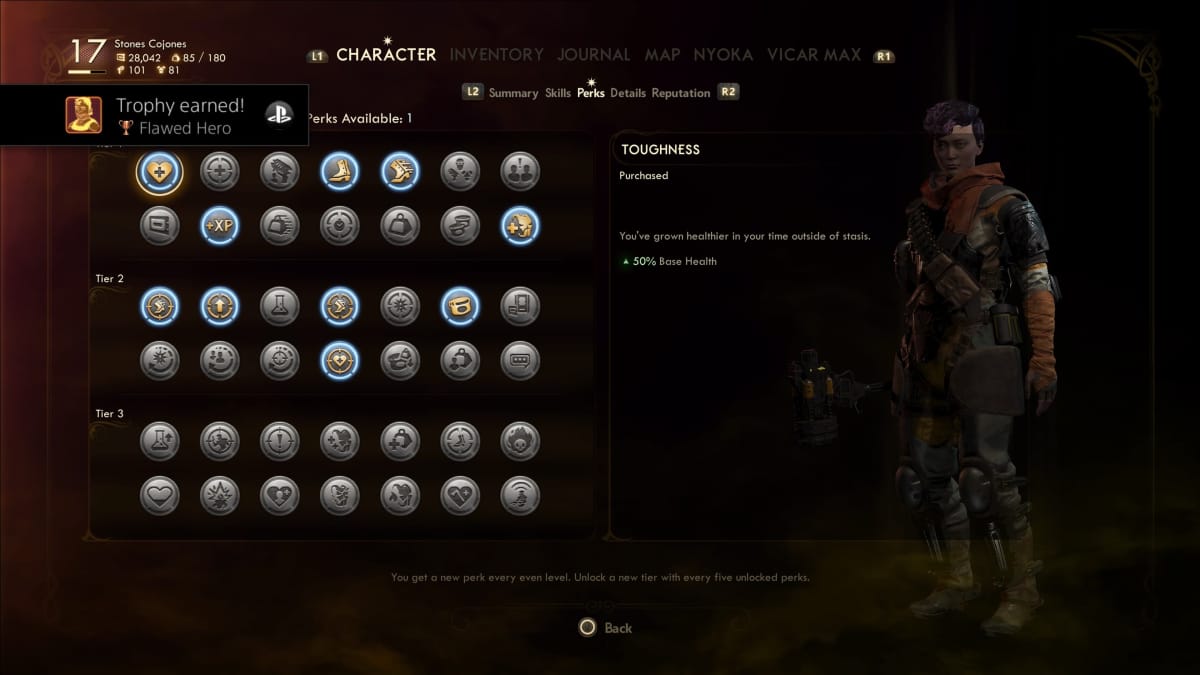
As you might expect from an Obsidian RPG, there are stats on stats in The Outer Worlds. You can determine your character’s six attributes, like Strength, Dexterity, and Charm. These remain static throughout your playthrough, but every time you level up, you can increase your 18 skills. Some of these dictate your proficiency with different weapons. Some govern your ability to talk out of any situation, hack any computer, or pick any lock. A subset of skills focuses specifically on your leadership, affecting your companions’ capabilities.
Long story short, you can play practically any kind of character in The Outer Worlds. Most if not all quests have multiple solutions, accommodating all sorts of play styles. For example, if you’re too dumb to hack into a terminal, you could just kill someone and use their employee ID to bypass security. If you’re frail yet charismatic, you can passively intimidate animals and robots, making things easier for you and your companions.
Leveling up feels meaningful, while skills and perks make noticeable differences in every part of your character. Despite that, you’ll never become a perfect jack of all trades. When you focus on one aspect, another will suffer, and that’s a choice you have to live with. If anything, that provides a reason to play through The Outer Worlds again, to experience it through a completely different lens.
Combat in The Outer Worlds
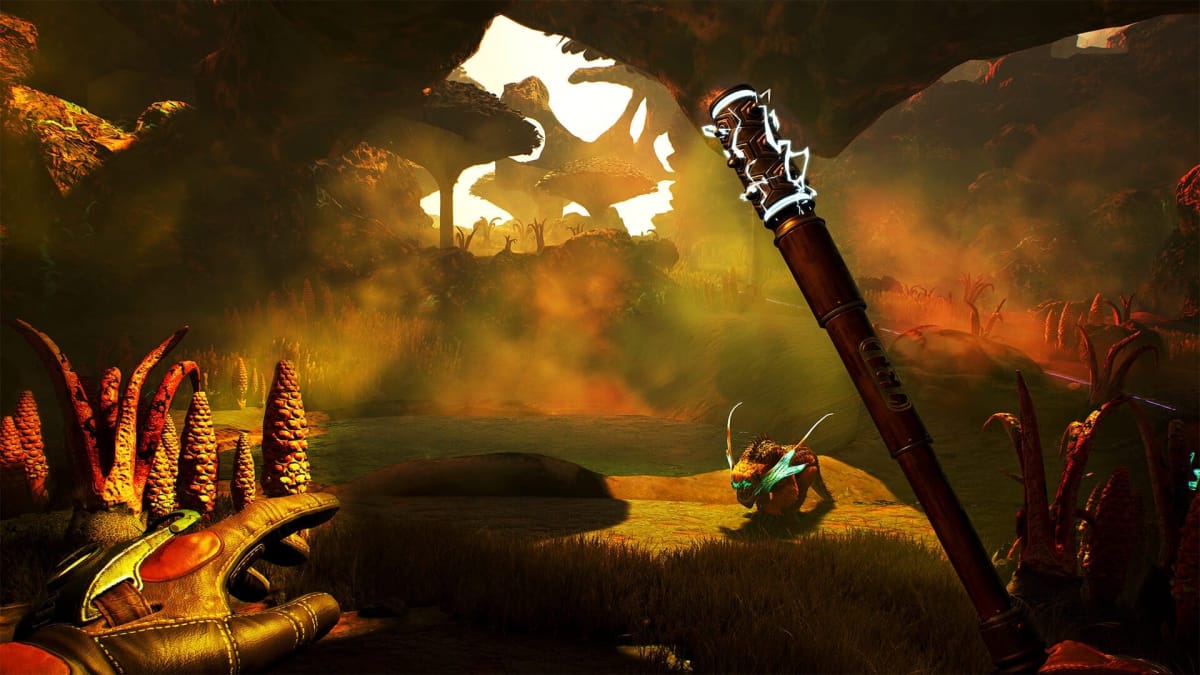
To boil it down, there are two ways to interact with NPCs in The Outer Worlds: talking or hitting. While you could theoretically avoid most fights by using subterfuge and charm, Obsidian built a fantastic combat system that rewards all sorts of fighting styles. Melee weapons feel weighty. The crunchy thud of your hammer hitting its mark (along with an appropriate rag-doll animation) really sells your murderous actions. From the two-handed chainsaw-axe hybrids to the simple batons, melee combat simply doesn’t disappoint.
The guns fall into one of three major categories: handguns, long guns, and heavy guns. With all the variety, you constantly find new toys to play with during your first dozen hours. From humble light pistols to gravity-defying grenade launchers, the weapon variety alone is nothing to scoff at. Furthermore, I didn’t find a single gun I hated to fire. Plasma launchers satisfyingly lob destructive balls of plasma, while the assault rifle remained a steady, reliable companion.
When combined with mods, guns provide all sorts of tactical opportunities for you to exploit. Certain enemies are weak to certain elements. Robots hate shock weapons, while most flesh-based creatures can’t stand plasma. At the workbench, you can slap these elements onto most weapons. In other words, rarely are you in need of a “better” weapon; all you need is a workbench to make a “different” weapon. Even in combat, Obsidian champions player choice.
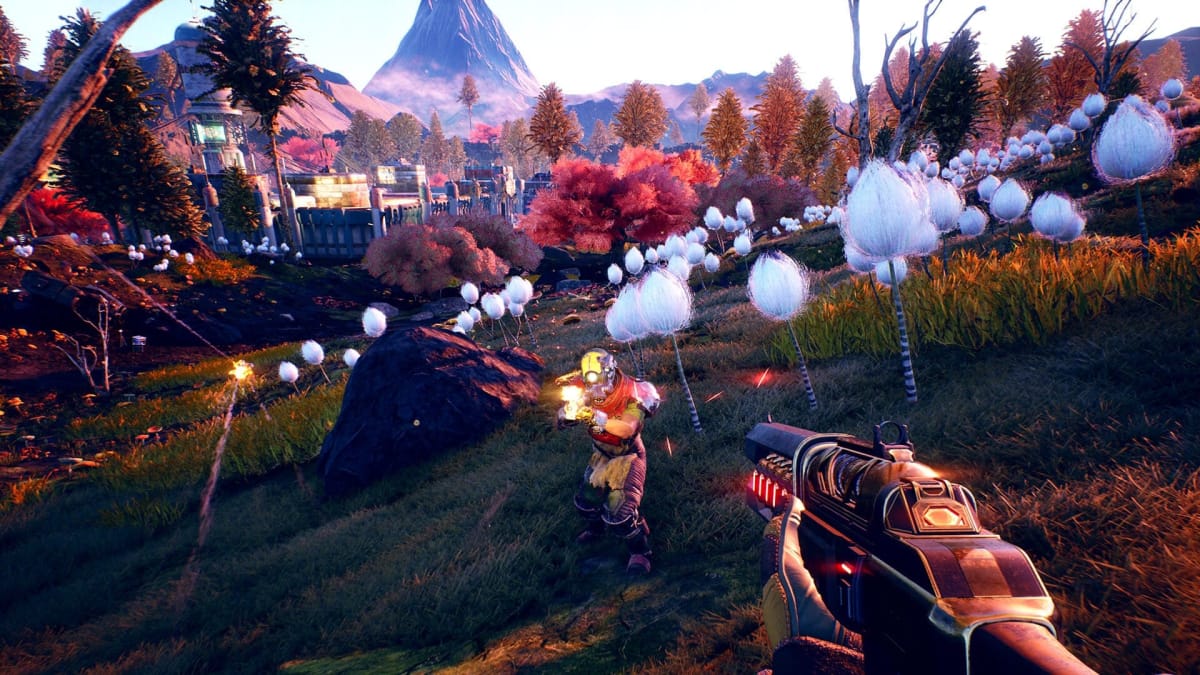
As the cherry on top of this combat cocktail, your character has an ability called Tactical Time Dilation. Time slows down for you, allowing you to line up your shots or close the gap. In this mode, you can also cripple enemies’ limbs, and headshots can cause blindness. Fallout fans might find TTD awfully familiar. However, you aren’t relying on percentages and dice rolls; you’re relying on yourself and your ability to aim. The absolute agency you have over your movement and actions in real-time elevates TTD and the combat.
By late-game, you become a monstrous force of nature. Perhaps a bit too monstrous. I played through the story on normal difficulty, and the final mission presented practically no threat. Thankfully, you can switch to a higher difficulty on the fly, but seeing the difficulty curve balance out more naturally over time would be a welcome sight.
The Writing is Out of this Outer Worlds
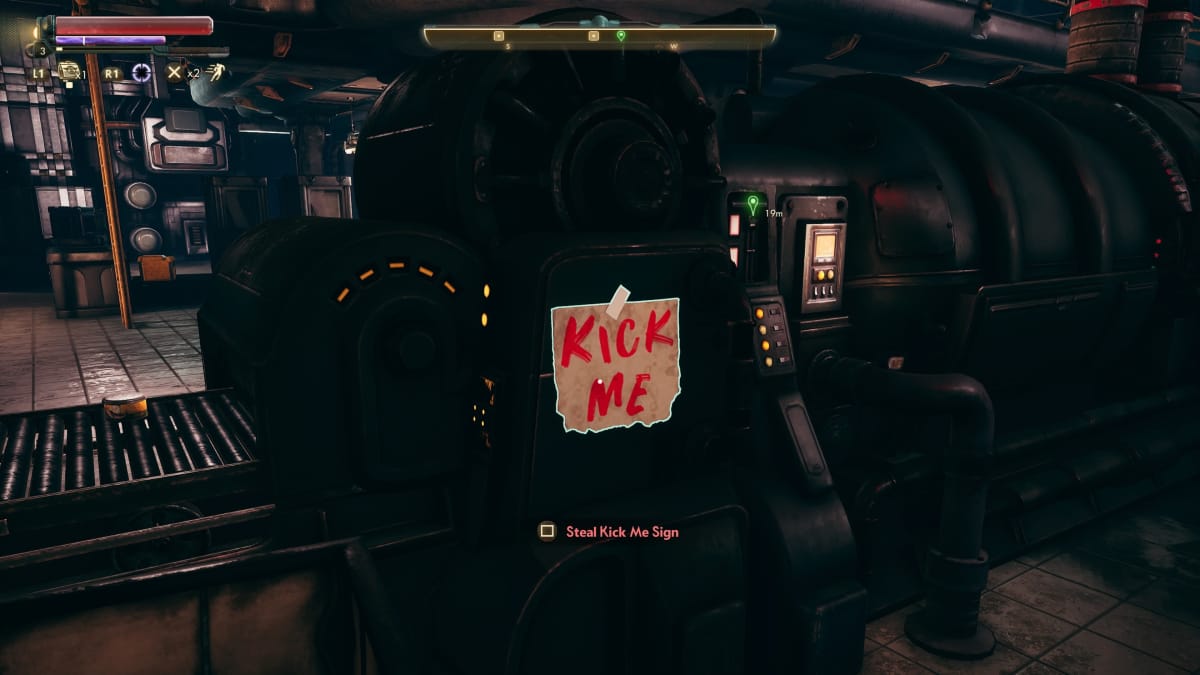
Between combat, you’ll find yourself in conversations with all sorts of NPCs. Frankly, depending on how you play, you could deal with more dialogue than combat. The punchy writing thankfully gets its moment in the spotlight, and there were moments I genuinely put down the controller while doubled over in laughter. If we classified game genres as we did for movies, The Outer Worlds would easily fit as a comedy, especially if you play a dumb character. Of course, the humor doesn’t drown out the narrative itself. If anything, it properly complements the absurd parts of the story while providing levity between the heavier narrative beats.
The Outer Worlds features its fair share of dramatic moments, especially between groups. As you meet the various factions on whatever planet you’re exploring, you’ll learn about their goals through various representatives. Often, the faction leader perfectly embodies the group’s ideologies, but nearby NPCs will provide depth and flavor to the overall community. You’ll learn a lot about the internal politics of every faction while juggling the external conflicts they face.
Some of these groups are at odds with each other, and you could be the deciding factor. The moments when you feel caught in the middle are when The Outer Worlds shines brightest. You get to know both sides of every debate through the people directly affected by the dilemma. That makes your decisions feel much heavier because you’ll actually know the people you’re condemning. Whenever I had trouble making a decision, I turned to my companions for their opinions.
Finding Companionship in The Outer Worlds
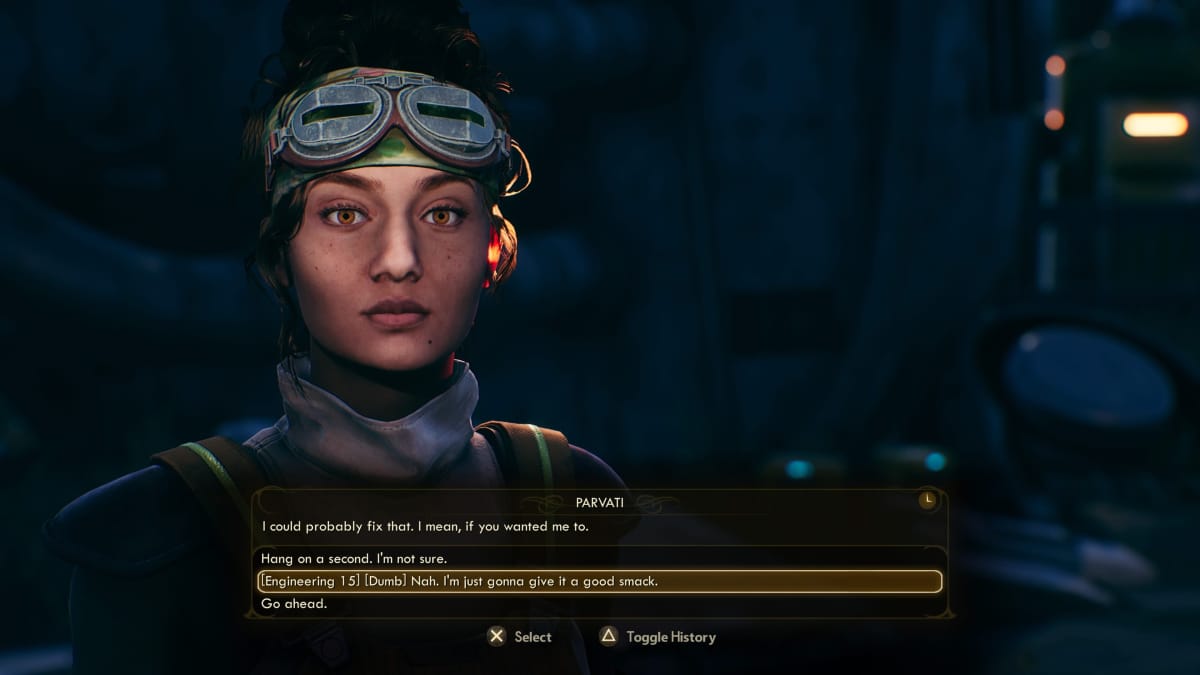
You can recruit six companions on your journey, but whenever you leave your ship, you can only take two with you. Each has a strong but lovable personality, and you can expect them to speak up during conversations. Their insights usually swayed me one way or the other when making large decisions, and it helps that they all come to the table with different perspectives. Parvati is a bit naive, but her optimistic outlook on life compels her to help people. Contrarily, Ellie takes a no-nonsense approach to life. Her relationship to you is purely business, and she trusts and helps no one but herself.
You’ll learn more about your allies based on how they react to other NPCs, but you can also pursue companion quests. The quality of these quests vary, but each one serves to teach you more about the people sharing in your adventure. The first two you can recruit—Parvati and Vicar Max—have the longest quests, which span across multiple worlds. In a way, I got the feeling that Parvati was an in-house favorite among the developers, considering how much time she and her quest received. Personally, I’m not complaining; Parvati quickly became my favorite, and Ashly Burch absolutely crushed the voice acting performance. However, it would have been nice to see some of the other companions get the same amount of narrative development.
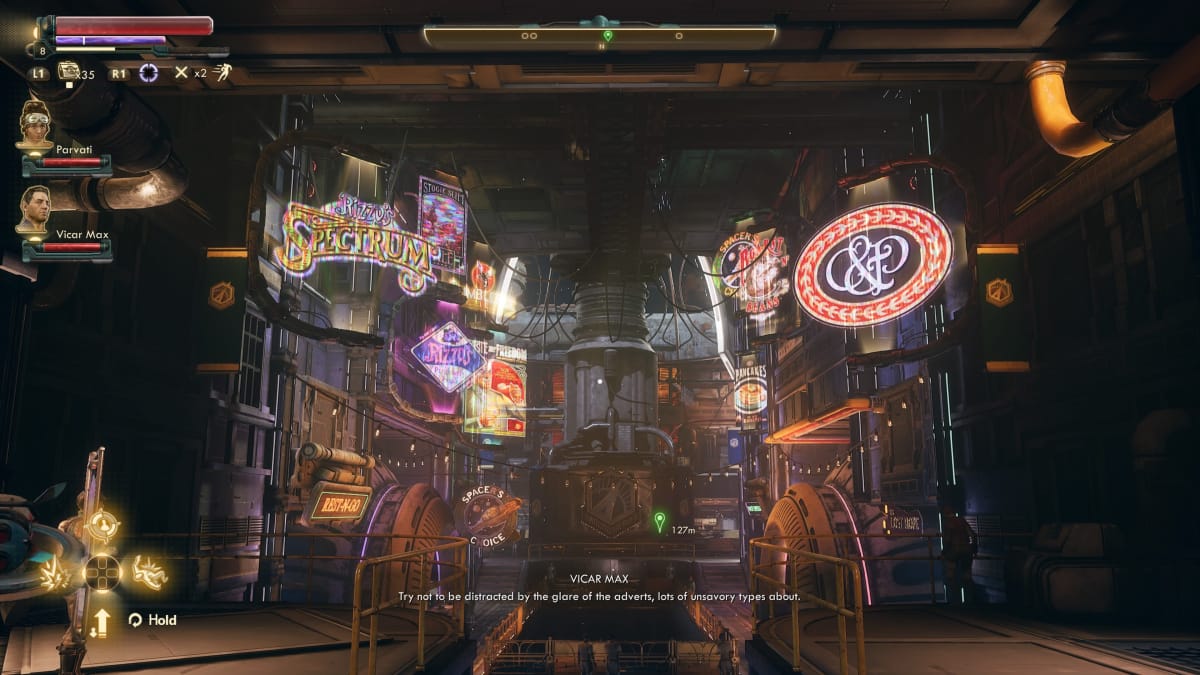
In combat, your companions rarely become nuisances. Enemies can't detect them if you take a stealthy approach, and their active skills come in handy when the guns are blazing. In firefights, each one has an arsenal of effective crowd-control and damage-dealing tools. They can be much-needed boosts in dire moments, and beyond that, they just look cool.
However, there are moments when my companions did nothing in combat—and I mean literally nothing. When a fight broke out, they wouldn’t pull out their guns and would simply walk around nonchalantly, as if they didn’t register the start of combat. You can order them to attack, which is an easy and quick fix to this bug. Still, it’s just a little frustrating when they inconsistently choose whether to automatically back you up in combat.
The Outer Worlds Review | Final Thoughts
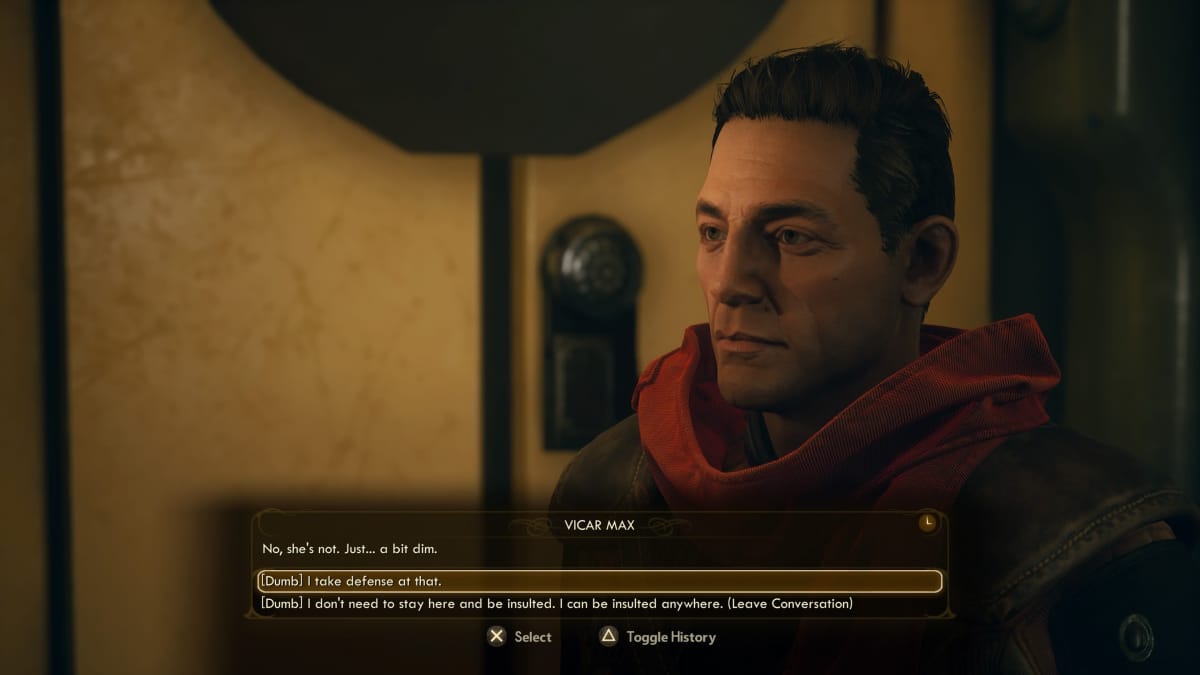
Ultimately, the moment the credits rolled, I did two things. For one, I laughed. The ending I got nearly made me fall out of my chair. Secondly, I immediately started a new character. The Outer Worlds ends pretty definitively, and it doesn’t leave much of a vast wasteland to wander through aimlessly. Everything it contains is so polished and refined that it’s worth experiencing more than once. You’ll wonder how things would have changed if you made different narrative decisions, and your mind races at the possible characters you could make.
In this post Fallout 76 landscape, The Outer Worlds stands as a shining beacon for what a well-made first-person RPG looks like. With the quirky dialogue, enjoyable NPCs, and engaging combat, Obsidian delivers one of the most memorable role-playing experiences of the year.
TechRaptor reviewed The Outer Worlds on PlayStation 4 with a code provided by the publisher. The game is also available on Xbox One and PC via Epic Games Store or Windows Store. A Nintendo Switch release is planned.
Review Summary
Pros
- Character Choices Feel Meaningful
- NPCs Contribute to a Believable Universe
- The Writing Charms Players
- Lovable Companions
Cons
- Late Game Gets Too Easy
- Some Companions are Less Developed Than Others
- Companions Can be Finicky in Combat
Have a tip, or want to point out something we missed? Leave a Comment or e-mail us at tips@techraptor.net
